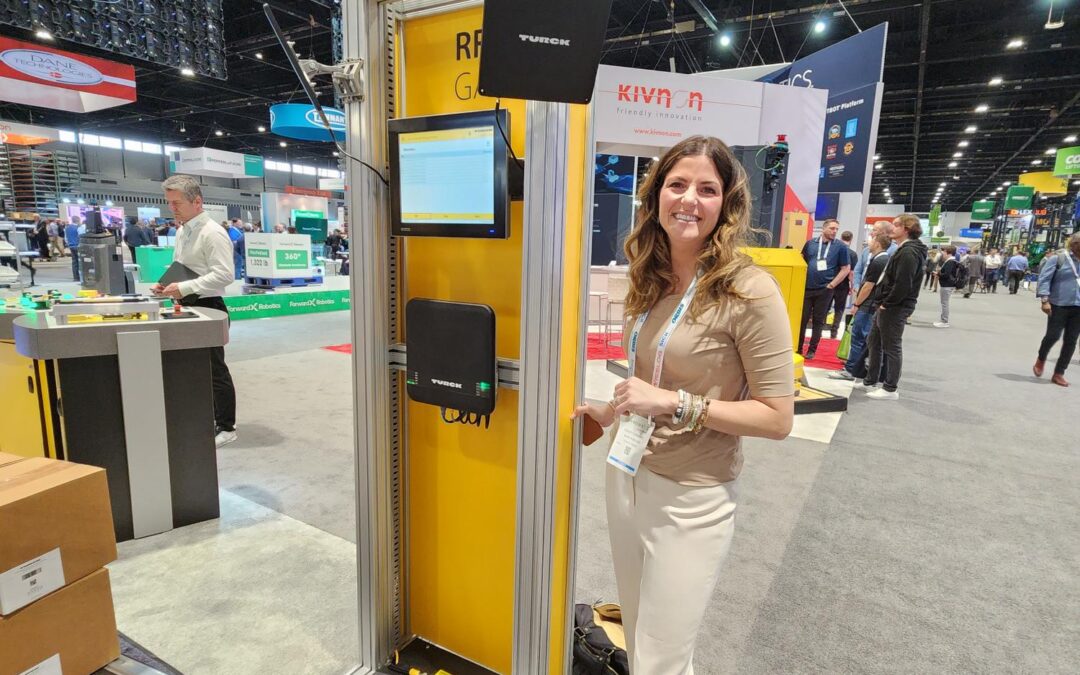By Scott Simmie
Some of the leading women in the Smart Mobility space got together to discuss progress, and even roadblocks, as the interconnected world of intelligent devices that will make up Smart Mobility moves ever closer.
The gathering was a live, virtual event entitled “Women Driving the Smart Mobility Revolution.” It was part of International Women’s Week and it brought together leading experts from Canada, the US and beyond. The event was hosted by Invest Ottawa, with sponsorship from Area X.O, BDC, MDK Business Law, Rogers and Women Automotive Technology.
Before we hop into some highlights of the discussion, it’s worth taking a look at what the term Smart Mobility means. Is it electric vehicles, capable of eventual autonomous operation? Is it drones, dispatched over 5G to deliver goods and services? Is it Uncrewed Ground Vehicles (UGVs, or ground robots) delivering food, pharmaceuticals and other supplies to homes and businesses? Ride sharing networks? Infrastructure that helps enable these technologies?
The answer is all of the above – and more. Smart Mobility, according to one succinct definition, “integrates all modes of transportation via wireless communications and applies real-time data analytics and machine learning to make transportation safer and more efficient.”
We think there would be widespread agreement that making transportation safer and more efficient is a worthwhile goal. And while there are some examples of Smart Mobility devices out in the world already, we’re heading toward an era of more widespread adoption.
But how long will that take? How will we get there? What will it look like?
All good questions. And there were some great answers from the three panels that took place during the event.
PROMISES, PROMISES
The event kicked off with a ‘fireside chat’ with one of the top experts in the field: Selika Josiah Talbott.
Selika is the Founder and CEO of Autonomous Vehicle Consulting. She’s a lawyer who practiced for 18 years as a product liability defence attorney, representing OEMs in automotive cases. From there she was appointed Deputy Administrator of the New Jersey Motor Vehicle Commission, with 1800 employees and a $200M annual budget. She was first introduced to autonomous vehicles in 2010, and is an expert on regulatory and policy implications of EVs and Smart Mobility.
Like the rest of us, she’s heard the hype. Moderator and automotive journalist Petrina Gentile kicked things off with a basic question: Where are we now?
“That’s the $64,000 question,” said Selika. “The industry has been saying for the better part of 10-plus years that ‘It’s just around the corner.’ There’s now frustration – this thing you’ve been promising us isn’t here and it doesn’t appear to be around the corner.”
But that doesn’t mean we can’t at least see the beginnings of that corner.
“Autonomous Vehicles (AVs) are being much more widely used across the globe,” she said. “There are thirteen ports around the world – mostly in China, of course – that are using some sort of Autonomous Vehicle expertise to meet port needs.”
She also pointed out that AVs are also making inroads in industries such as mining and farming. Robot deliveries have started, and she anticipates great inroads here “as we start to deliver groceries and medicines to people who are not able to go and get it themselves.”
Below: Moderator Petrina Gentile listens during the ‘fireside chat’ with Selika Josiah Talbott
EQUITY
Selika clearly thinks about this field a lot. And she’s very passionate about the big picture beyond the nuts and bolts of the technology. Specifically, any successful Smart Mobility strategy must be equitable and accessible for all. Her mantra, she says, is “Transportation is mobility; mobility is freedom.
“Transportation is the real equaliser,” she emphasises. “If I don’t have an opportunity to get to school, to get that education, if I live someplace where transportation is limited, how do I access medical care? … Whether it’s your home, your food, education, your job – every single thing that we do requires some form of transportation. So my work is centered around the movement of people, goods, and most importantly information.”
She continued: “What happens if I’m differently abled? Or if in the community I’m in there’s a shortage of labour, or I can’t afford the maintenance, upkeep, care and purchase of my own private vehicle? … An autonomous vehicle can fit those needs.”
Accessible public transport, she says, must be part of any successful Smart Mobility strategy, and must be an integral part of a Smart City in the future.
AND AN ASIDE
Selika Josiah Talbott is an African American woman. Moderator Gentile asked her about her experience as a Person of Colour during her career – and if there had been any ways in which she had been treated differently as a professional.
“I don’t dwell on them,” said Selika. “But that doesn’t mean it doesn’t sting. I’ve represented OEMs, vehicle manufacturers, back in the 90s. When we had conferences and board meetings, I was not allowed to sit at the table. I had to sit at the back wall. I might have been representing you…but I was not at the table for what we have deemed as cultural reasons.
“We didn’t (push back). We accepted it, and we moved on. I made sure that I was the best that I could be in that space.”
Below: The next panel on the agenda
PANEL ONE
After Selika’s presentation, it was on with the program. Specifically, a panel called “Driving the future of advanced technology in logistics.”
This was a broad-ranging discussion, starting with a question from the moderator: How do you see drone technology evolving over the next five years?
Stacey Connors, InDro’s Head of Strategic Innovations, offered some examples of where this company has been – and how those set the stage for the future.
“Some of the neat deployments may exemplify where the industry is going,” she said. “We participated in a pilot where we delivered defibrillators.” That trial took place in conjunction with Renfrew County Paramedics in Ontario. Rural locations were chosen to stage a cardiac incident, using a medical dummy. A mock 911 call was placed, and then an InDro drone carrying an automated external defibrillator was dispatched. At the same time, a paramedic crew raced to the location in an EMS vehicle.
The goal? To see which could deliver the product more quickly in a scenario where every minute that passes following a cardiac event diminishes the possibility of survival. The result?
“We were seven minutes faster,” said Connors. In fact, that was the average over multiple runs.
Connors went on to predict routine contactless delivery of medical supplies to hospitals, as well as the rise of connected inventories – where the supply chain is transformed by automation, AI and Big Data working in synergy.
“This concept of connected inventories will dramatically change supply chains and open a lot of opportunities,” said Connors. “InDro Robotics specifically is leaning into this and building out some solutions for inventory management, cycle counting. Because that inventory accuracy is absolutely critical if you want to open up a connected inventory or connected supply chain.
“The other interesting application definitely connected… is the capabilities of the private networks and 5G. I think a lot of people have not yet realised the full capabilities that these private networks will offer…it opens up so many opportunities for teleoperations.”
THE RISE OF AI
One of the other topics was the seemingly exponential advancement of Artificial Intelligence. Will AI advance logistics – or potentially create problems? The consensus appeared to be that AI will lead to better decision-making and efficiences. It was also suggested that we are currently merely at the dawn of where AI will take the world.
Vivian Sun is the Chief Commercial Officer at Waabi, a company specialising in autonomous trucking. She describes herself as “a big fan” of ChatGPT and uses it regularly. She believes AI (which is already part of the core of the Waabi Driver system) will lead to safer and more reliable Smart Mobility systems.
“This wave of AI technology has been reaching more users than before,” said Sun – adding that this is only the beginning.
“This is the iPhone moment of AI history,” she said.
Hearing Sun speak about Waabi sparked us to take a closer look at the company. It’s up to some very cool stuff. And, as you’ll see in this video, AI is integral to Waabi Driver:
DRONES, ROBOTS
When we think of a Smart Mobility world, there’s no question that robots, drones and other forms of Uncrewed Aerial Systems come to mind. Moving critical supplies – or even people – with automated, renewable systems will definitely be part of the not-so-distant future.
“Honestly, they (drones and robots) mean two specific things: Efficiency and convenience,” said Mohammed Abu-Shaaban, Chief Technical Officer and Co-Founder, Kirality Drones. The Ontario-based company specialises in making drone deliveries at golf courses.
“The implementation of robots and drones is a target to achieve ultimate efficiency in day-to-day operations and also to provide the element of convenience to lay people – to anyone that just needs it. Say a robotic lawn mower. You don’t want to mow the lawn? It takes that mundane task away. Or conducting deliveries…”
At the moment, drone operators in Canada can obtain one of two licenses from Transport Canada: Basic or Advanced. But as drones – and drone operations – become ever more complex, it was suggested training needs to keep pace to ensure pilots have the skills for highly specialised operations. InDro’s Kate Klassen, who has deep expertise in traditional aviation and is also InDro’s Chief Flight Instructor, suggests the time has come for specialised training and certification in the drone and robot fields.
“Aside from the drone pilot certifications that we have in Canada, there really aren’t any skill-set specific certifications that you can achieve,” said Klassen, InDro’s Strategy and Implementation specialist. “It’s worked up until this point but the industry’s maturing to a point where standards beyond that government pilot certification, or for roles beyond the pilot, are going to be desired and needed.”
Klassen went on to suggest the time has come for specialised training and credentials for the more complex tasks (and technology) currently seen in the industry.
“I’d love to see some industry-recognised certifications within those specific niches – so like inspection, whether that’s commercial or industrial, doing work at advertised events, working in really cold operations…even things that are not direct pilot roles, like support roles for BVLOS operations. Those micro-credentials, apprenticeships, allow people to demonstrate that they’re competent and have that competitive advantage when they’re trying for roles.”
AND THE FUTURE?
There was widespread consensus on the panel – as you might expect – that drones, robots and other Uncrewed Aerial Systems will continue to grow in sophistication and use-cases. The use of drones during the pandemic to move supplies (and the use of ground robots for contactless delivery) has opened to door to public acceptance.
“The pandemic really represented for us was just: How do people get stuff?” observed Bronwyn Morgan, Founder and CEO of complex drone service provider Xeo Air and Airversity Drone Pilot Academy.
“I think it demonstrated why drone delivery, specifically, will be a thing in the future,” she said.
But Smart Mobility isn’t just about drones and robots. New and larger uncrewed aircraft that will one day ferry heavy cargo and even people over urban centres and to nearby communities not currently or efficiently served by traditional aviation are in development and testing. Air taxis and Vertiports (urban airports for eVTOL aircraft) are considered by many to be integral to Smart Mobility and Smart Cities of the future.
But don’t expect this on the immediate horizon.
“It’s a lot further away than people think,” said Morgan. “These are new aircraft. They have to demonstrate flight hours, safety… All you need is one incident for the whole thing to be shut down.”
Morgan predicted that cargo drones will be on the scene by 2030, “and probably not until 2035 until we see air taxis, business models, vertiports… It will be some years.”
Below: During the pandemic, InDro carried out regular Beyond Visual Line of Sight flights for a First Nations community in BC’s Gulf Islands. Transporting COVID test supplies by drone meant a local healthcare worker could remain at the clinic with clients, rather than spending hours on the ferry hand-carrying these supplies. Operations like this are certain to become more commonplace in a world of Smart Mobility.
INDRO’S TAKE…
With a growing number of drone and ground robotics innovations and solutions, InDro is well-poised for the coming wave of Smart Mobility. A connected, sustainable future with greater efficiencies is in everyone’s interest.
We applaud Invest Ottawa for putting together this event during International Women’s Week, and were pleased to see two of our valued InDro employees as panelists.
“There are a growing number of women holding senior positions in the robotics and drone space, but there’s room – a lot of room – for more,” says InDro Robotics CEO Philip Reece. “As Smart Mobility continues to grow, we hope to see greater gender equity in the field – and will continue to support women across this space. There are a lot of challenges and opportunities ahead, and this industry needs the best people possible.”
If you’d like to watch the panels, you’ll find them here.



